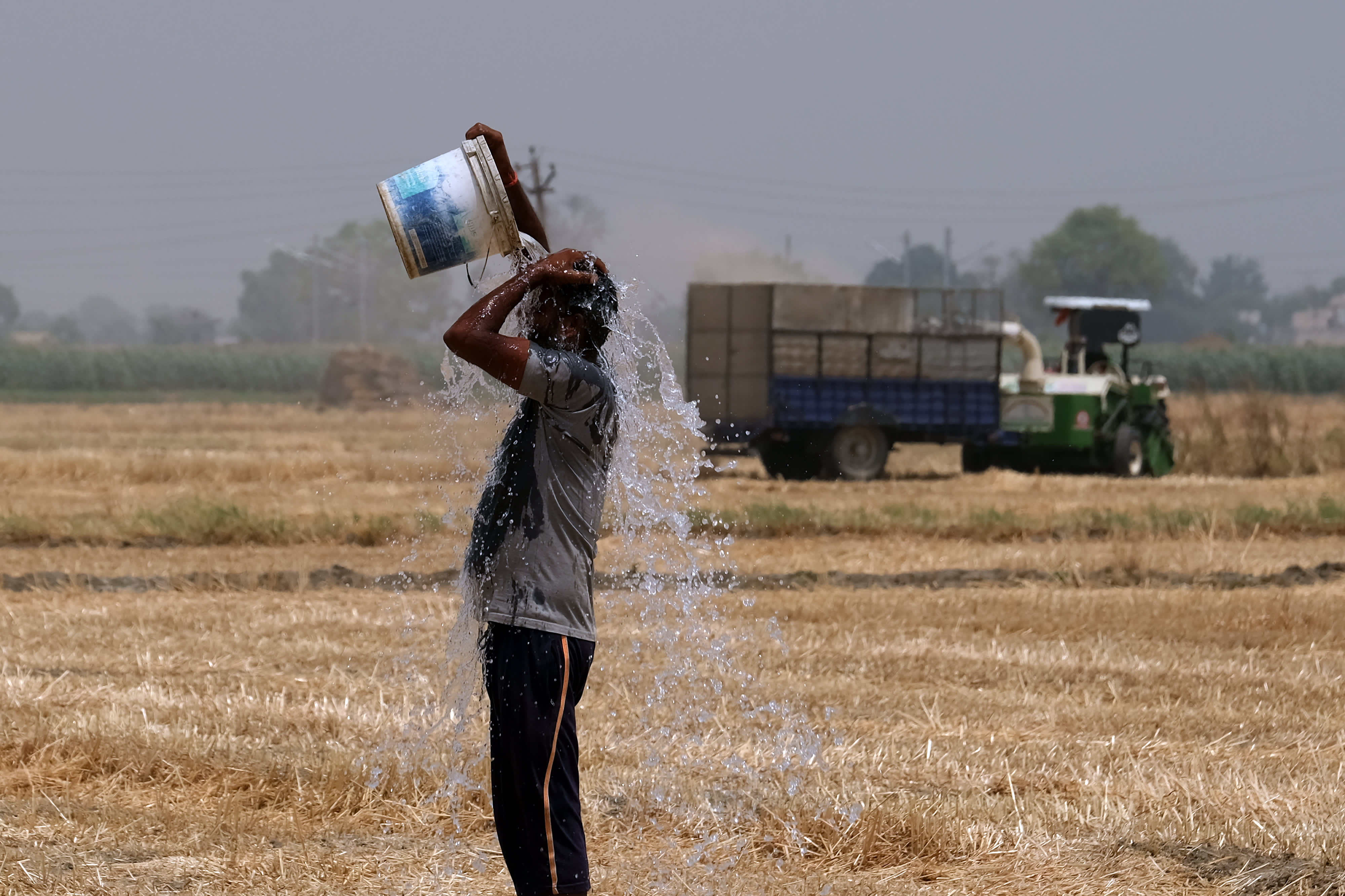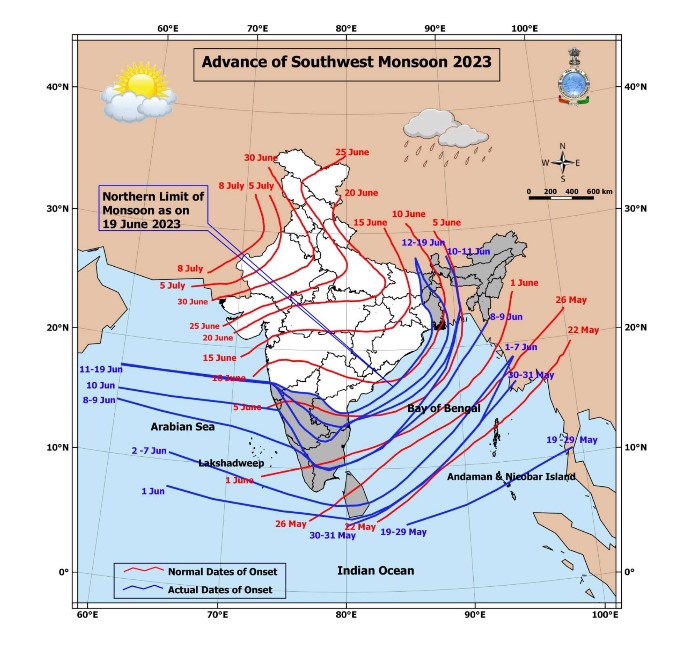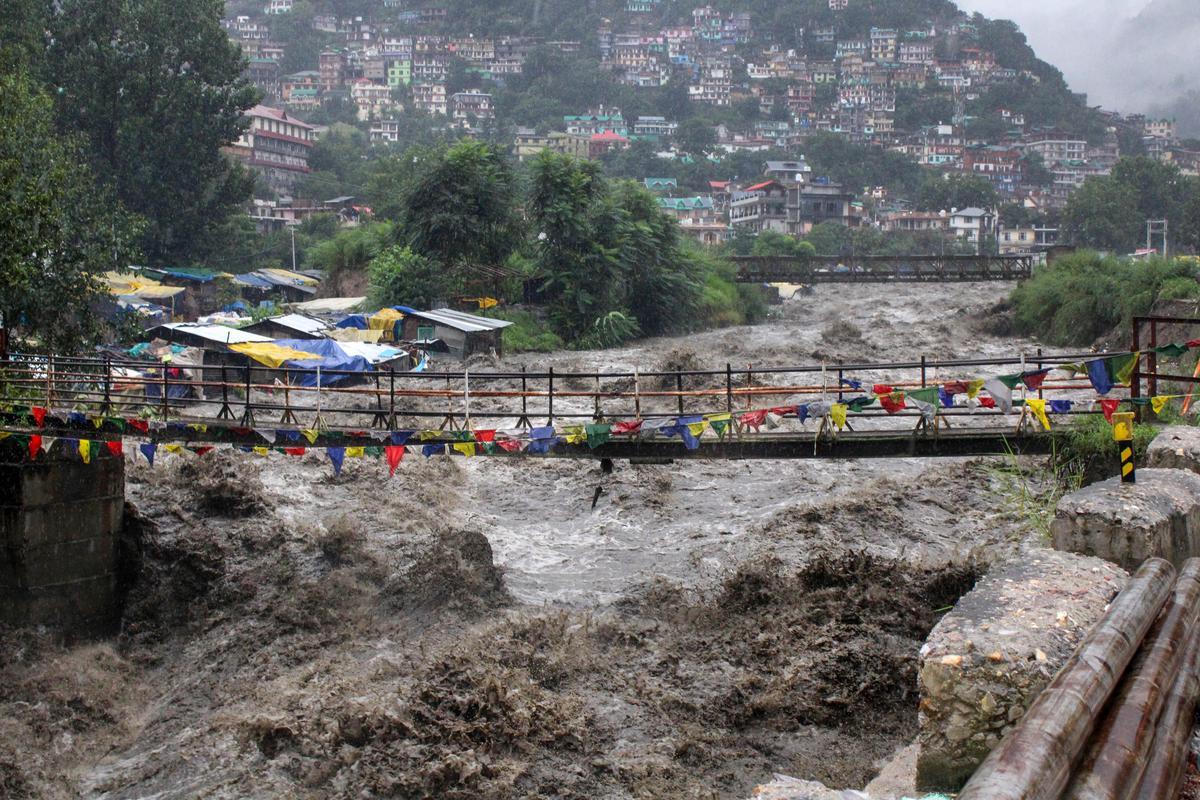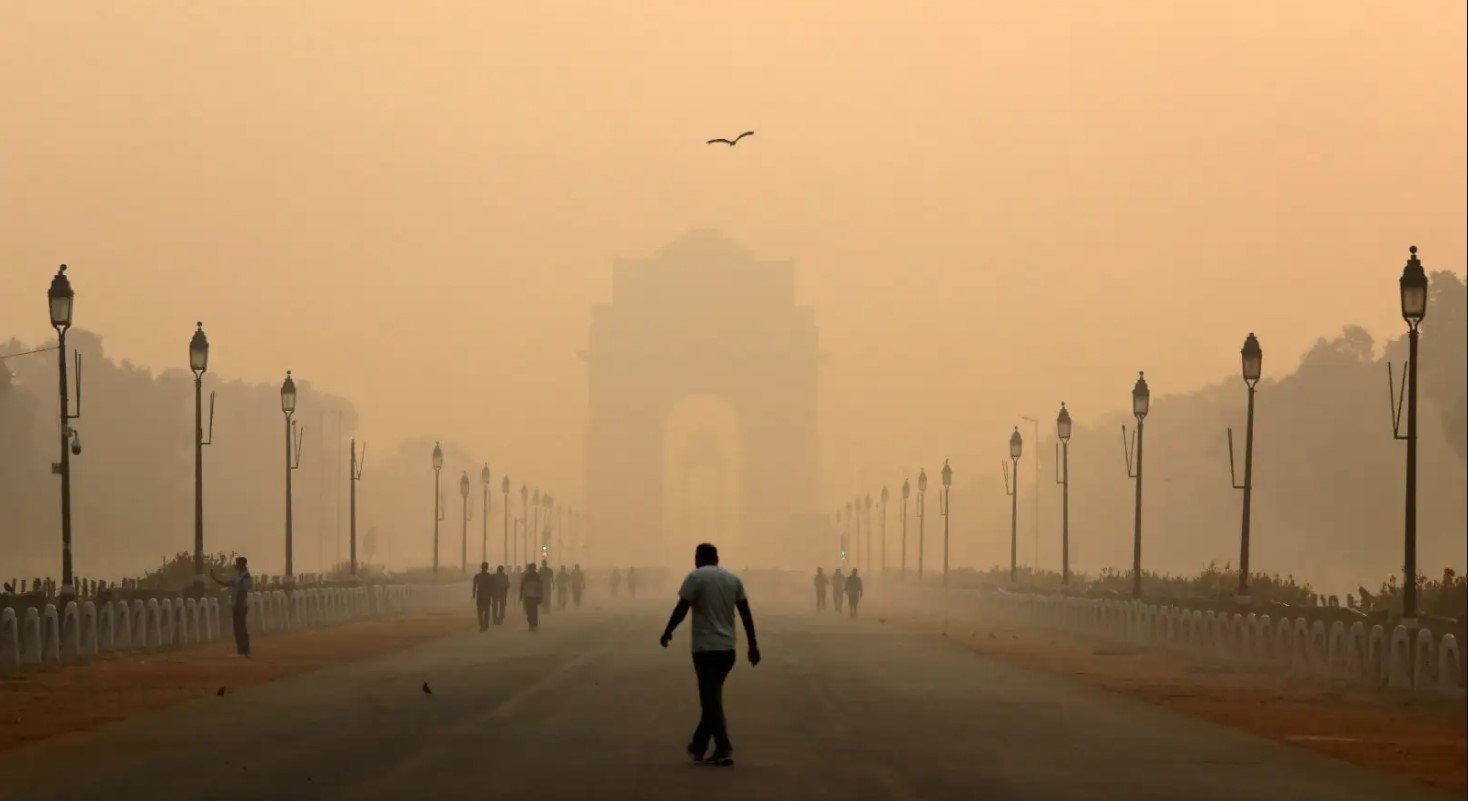Delayed monsoon, climate change led heat stress behind prolonged heatwave in India
A delay in Monsoon progress is not a very rare thing to witness. There are years when the weak Monsoon current is not able to drive rain, leading to hot and sultry weather conditions. However, the rising global temperatures have increased the probability of extremes be it heatwaves or torrential rains.
By Editorial Team / Jun 20, 2023

Image Credit: CNBC
Severe heatwaves in India have been wreaking havoc across east and central parts of the country, claiming around 100 lives. Further, the magnitude of heat waves has increased by manifolds on account of the high humidity prevailing over the region.
Uttar Pradesh and Bihar have been worst affected, with the death toll mounting to 68 and 40, respectively. Other states which have been reeling under heatwave include parts of the Vidarbha region of Maharashtra, East Madhya Pradesh, Jharkhand, Chhattisgarh, Odisha, Telangana, and Coastal Andhra Pradesh.
Maximum temperatures have been settling well above the normal average by 5-7 degrees between 42°C-46°C during the last seven to nine days. The presence of high humidity makes the feel-like temperature up to 50°C-51°C.
India had successfully evaded the peak heatwave season for Northwest India on account of the above-normal rains. However, East India has been witnessing spells of heatwaves at regular intervals due to below-normal rains during the pre-Monsoon season. Further, with Monsoon also missing the deadline, the situation has aggravated and become dangerous.
“Delay in arrival of the Monsoon over East and Central India has led to prolonged heatwave conditions. Had the Monsoon arrived by its normal time, the region would have gotten massive relief. With rains still evading the region, humid winds from the Bay of Bengal have increased the discomfort. There is no denying the fact that there has been increasing heat stress due to global warming. So, all conditions put together have resulted in extreme weather,” said Mahesh Palawat, Vice President – Meteorology and Climate Change, Skymet Weather.
“Heatwave spell has extended due to the absence of Monsoon rains from the region. Humidity levels witness a steep rise with the Monsoon current around the corner. At present, Monsoon rains are yet to make an appearance over these parts of the country, and wind speed is also slow, which could not take away the humidity. In the absence of rains and adequate wind speed, maximum temperatures are still settling on the higher side, resulting heatwave to severe heatwave conditions. Humid heatwaves are far more dangerous than dry heatwaves, and thus, the impact of humid heatwaves is more significant,” said Dr Vimal Mishra, Professor, IIT Gandhinagar.
Role of the Southwest Monsoon 2023 in heatwaves
After making subdued and delayed onset, the progress of the Monsoon current has also been very slow. According to the rulebook, Monsoon should have covered most parts of Central and East India and should have also arrived in some parts of Uttarakhand by June 20. However, Monsoon is presently lagging far behind the schedule. Currently, the Northern Limit of the Monsoon is passing through Ratnagiri, Raichur, Kavali, Canning, Sriniketan, and Dumka.
Ever since its arrival, it has stalled for at least 5-7 days before making further progress. In a usual scenario, the progress of the Monsoon stream to the central and eastern parts of the country is relatively rapid.

Image Credit: IMD
How weak a Monsoon current and Cyclone Biparjoy triggered heatwaves?
Cyclone Biparjoy had appeared very close to the onset of the Monsoon over Kerala. Not only it pushed away the arrival of Monsoon but it also halted its progress. As it became more marked quite rapidly, it pulled away all the moisture from inland, stalling the Monsoon.
Biparjoy would not have intensified so rapidly if the ocean waters had not been so unusually warm. And that would have impacted the progress as well as the performance of Monsoon less. Meanwhile, back-to-back typhoons in the Pacific Ocean, took the winds away from the Indian Ocean towards the South China Sea, stalling the Monsoon. Thus, all this brings us back to the impact of climate change and how it has been fuelling slow-onset disasters.
“We are witnessing cyclone formations in the pre-monsoon cyclone season that too close to the monsoon onset off late. This is perhaps due to the influence of a warmer Arctic Ocean on winds over the Arabian Sea. Heatwave along the East Coast is quite rare during this time of the year. Combinations of Typhoons, cyclones, and Monsoons along with global warming are leading to unusual weather conditions. The current heatwave in East India is one such example. Typhoons in the Pacific Ocean and the most recent Extremely Severe Cyclone Biparjoy in the Arabian Sea have been responsible for taking away the rains from India,” said Raghu Murtugudde, Professor, Department of Atmospheric and Oceanic Science, University of Maryland and Indian Institute of Technology-Mumbai.
“Heatwaves in East India, both during the pre-Monsoon and Monsoon seasons, are related to heating over the Arabian Sea and the Bay of Bengal and unusual winds, which are related to typhoons and cyclones. The Bay of Bengal has been warmer than usual, penetrating heat along the East Coast,” added Dr Murtugudde.
Everything comes down to Climate Change
A delay in Monsoon progress is not a very rare thing to witness. There are years when the weak Monsoon current is not able to drive rain, leading to hot and sultry weather conditions. However, the rising global temperatures have increased the probability of extremes be it heatwaves or torrential rains.
According to the latest World Weather Attribution (WWA) study, climate change has made humid heatwaves 30 times more likely. April 2023 series of heatwaves swept parts of India. 13 casualties and about 50-60 hospitalisations due to heat stroke were reported in Navi Mumbai, Maharashtra, on April 16. Meanwhile, schools in West Bengal, Tripura, and Odisha, were closed three weeks earlier than planned due to the heat. In addition, many forest fire incidents occurred during the same time in India.
The report stressed on humidity, a crucial factor in how high temperatures affect the human body. As per the experts, the way humans cool themselves becomes less effective at high humidity. Thus, heat is more dangerous in humid conditions. Due to the high humidity conditions during the heatwave, heat index values are higher than the actual temperatures. The study has concluded that the estimated heat index values exceeded the threshold considered as “dangerous” (41°C) over the large parts of the South Asian regions studied. In a few areas, it neared the range of “extremely dangerous” values (above 54°C) under which the body temperature is difficult to maintain.
Roxy Mathew Koll, a climate scientist at the Indian Institute of Tropical Meteorology, stressed the need to include scientific measures like the wet-bulb temperature that combine heat and humidity.
“Global warming, along with several atmospheric factors, have led to the current heatwave. There are places in India where the temperature itself may not be that high, but when combined with high humidity, life can be very difficult. Thus, we need to have a long-term vision, as at present our climate models are not very accurate in predicting extremes.”
According to a study, ‘Extreme heat in India and anthropogenic climate change’, wet bulb temperatures have witnessed a steep rise due to increased humidity from irrigation and higher sea surface temperatures (SSTs) even when extreme temperatures have not. Humidity will probably continue to rise] with rising global warming trends. The combination will result in a substantial rise in the temperature of heat waves. The high humidity will make health effects worse.
Excessive heat can have a devastating impact on human health, resulting in heat cramps, exhaustion, and life-threatening heat strokes. Children, the elderly, the homeless and outdoor workers are most vulnerable. Excessive heat can also aggravate pre-existing pulmonary conditions, cardiac conditions, kidney disorders and psychiatric illnesses.
According to a study by The Lancet, India recorded a 55% rise in deaths due to extreme heat between 2000-2004 and 2017-2021. Exposure to heat also resulted in a loss of 167.2 billion potential labour hours among Indians in 2021.


